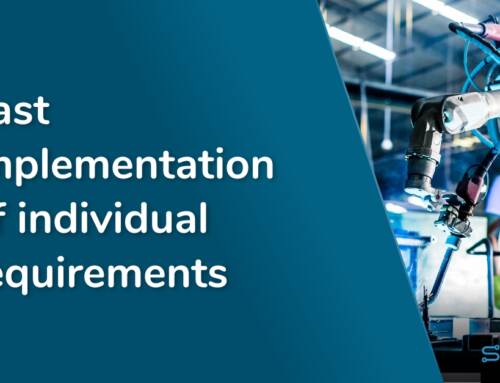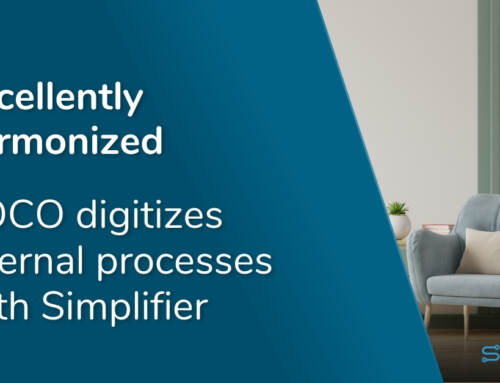For a long time iTiZZiMO has been working with software. A major part of our work is to make applications as user-friendly as possible. This activity is known as User Experience (UX).
What exactly is UX?
User Experience describes all aspects of the service of software. Meanwhile the concept is transmitted on physical products as well. In difference to Usability, the User Experience describes the complete user perception, also the product requirements, without using it or without a reflection of the actual use of the product. Usability concentrates on the pure use of an application. Therefore it considered only the moment of the actual use.
Why is UX so important in the modern software development?
Software has participated an enormous transformation in the last decades. Do you remember on MS-DOS, a Microsoft operating system for stand-alone computer in the 1980’s? There wasn’t a graphical user interface at that time. The handling presupposed several knowledge about the operation syntax. Though it wasn’t complicated like an own computer language but it was nearby. How many people, that work regular with software, can really program? To be honest, we have no idea but it may be a fraction.
Since software has played an increasingly important role in our everyday life and will also continue to play, it is obvious to enable the service to as many people as possible.
That’s why software has to be more easier and not only in the private area. Smartphones and Tablets have herald a new era of intuitiveness. Many employees don’t want to disclaim on this convenience on mobile devices and desktop, on which they have accustomed, also in use of internal software.
An essential advantage of easy-to-use applications from an economic point of view is the reduction of the faulty operation. With simple software, the efficiency can be increased enormously as users can work faster and less time-consuming inquiries arise. The time required for training is also minimized.
Companies and the UX
Particularly large companies with their own development department has now responded to the new requirements and are increasingly employing User Experience Designer. This profession is relatively new. The specialists design software in such a way, that it is as simple as possible to handle for the users or also different user groups and that it gives them a positive overall experience.
The design is important, but UX-Design is more than a simple embellishment of software. An important example of this are learned, familiar functions should keep in order to that applications to be understood and accepted. This means, for example, that the “Back” button leads the user to the previously visited page. A further learned element relates to the color symbolism. As a rule, green represents “confirm” and red represents “cancel”. Not only apps follow this principle, but also machines or traffic lights. It’s important for UX Designer to know that different cultures can have different requirements with regard to color symbolism and application design. Particularly internationally-oriented applications requires a lot of time for conception, which makes the UX cost-intensive. As a result, in many companies the well-trained specialists are used as developers, although they should actually design the development work.
Simplifier and UX – how does it work?
As more and more software is needed for more and more purposes and no company can afford to wait for an application for several months or even years, systems are needed to shorten the concept, development and test phases. This is where our Simplifier starts. Instead of programming software from scratch, developers who work with our low-code platform “Simplifier” can access pre-built elements: whether the layout, specific functions, entire applications or plug-ins – all preconfigured elements have been developed and provided with our UX-Designer and supplies positive user experiences to the users. Thanks to rapid prototyping, new ideas can quickly be transformed into clickable demos. This helps to ensure that the idea ends up with the next user before the actual work starts. Often the realized applications disagree with the user requirements and subsequent changes do not only cost a lot of time but also a lot of money. In general, the time for the implementation can be reduced by up to ten times. So developers work more efficiently and can focus on features that can’t (yet) be represented by configuration.
UX exaggerated
The UX design is about analyzing user groups as precisely as possible to implement applications according to the different needs of users. A simple example is the layman and the expert mode. The layman receives tips on the operation, while the expert can do without it. User groups can be determined very generally, but also very granularly. The higher the number of user groups, the more complex the implementation of the application. Analyzes have to be realized for each user group. User profiles and guidelines have to be developed for the implementation.
Through the configuration option with the Simplifier, the conversion time is reduced massive. So that it’s quite conceivable to create almost individual software. Ready-to-use applications can be easily copied and with a few clicks, e.g. all buttons can be enlarged, so that the application can also be used with gloves. Sharper contrasts helps to handle in the sunlight and elements could be enlarged for older users to improve readability and usability.
Voice-controlled applications can be adapted to text input and output for users that work in noisy environments.
In principle, such changes with the Simplifier are not a problem. Everyone has to decide for themselves if it’s worth or not. Even with the use of the Simplifier it is not economical to operate infinitely many variants of an application.
A look into the future
Smartphones and tablets are the one thing. The other thing is that UX is more complicated with the new personal assistants, such as Siri or Alexa. It is because the buttons and other content elements indicate the purpose of the respective application very quickly for all devices that have a display. But personal digital assistants use an invisible user interface that does not recognize the functions at first sight. The user has to find the functional scope first – for the UX designers a complex task, because spoken language becomes the means of communication between software and users. In the future, speech usage, volume, or complexity of sentence building will be the line of action of UX experts.





